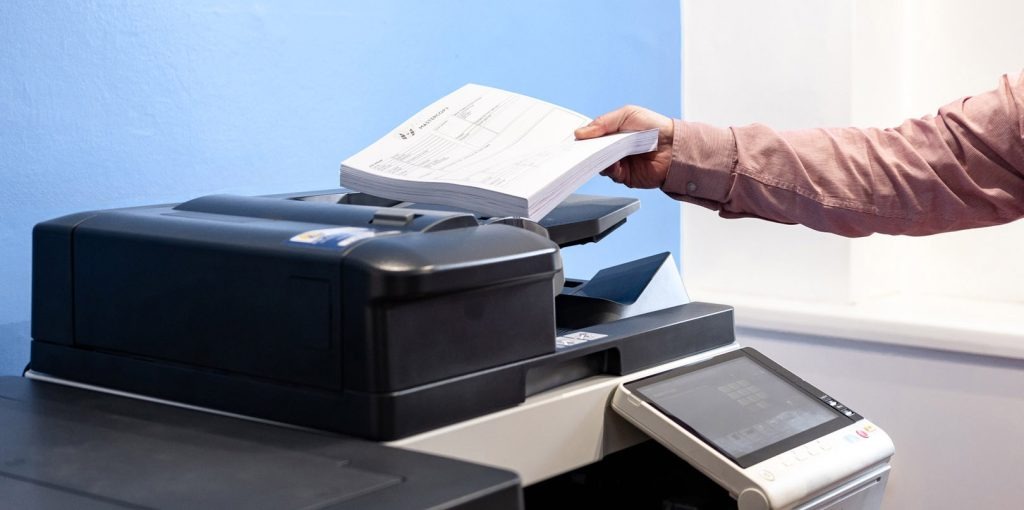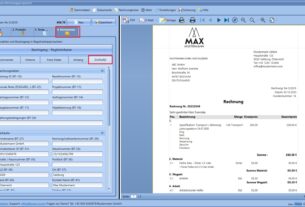Recognizing new potentials and successfully exploiting them wants to be learned – from urgent orders to long-term digital archives.
Digitization is now a recognized process and is becoming more and more visible in our daily lives. The deluge of paper is decreasing, the hanging files and folders are almost retro, and hardly anyone can imagine a day without the Internet.
And now document portfolios are taking another step towards digital. Once upon a time, huge air-conditioned spaces with raised floors and all kinds of special layouts were required for Mainframes to work seamlessly – Mainframes that after gave way to more compact solutions that are now themselves being replaced by the cloud. Now the paper archives are also streamlined.
Long-term digital archives are on the rise: document processes are increasingly automated and the proportion of digital information is several times higher than that on paper. The growth of information, the regulations in this regard and the technical requirements for the implementation of a digital archive all pose challenges, from individuals to organizations to companies, governments and governments. Digitization projects are born from the ground up everywhere, from E-Banking to e-government via the electronic patient record.
Most of them serve to demystify digitization. Despite high computing power, increased storage capacity and a variety of software, there are still many factors that can cause the best plans to fail – the digital world is not a golden laying goose!
In a world of Bits and bytes, we must also not forget the human factor, either in terms of usability or privacy. Technologically brilliant systems cannot guarantee the acceptance or transparency of users with regard to lawful regulations and policies. Traceability is relevant not only for Digital Files in an archive, but also for people.
Scan-Convert-Save

A well-thought-out scanning process scans the documents as soon as the mail arrives and allows a paperless document flow from that moment on. This minimizes sources of error, increases the quality of documents and saves time and money. The process involves scanning, indexing and compressing paper documents to create electronic documents. Text and barcode recognition, which includes the addition of metadata and a digital signature, confirms the validity of electronic documents and allows an electronic search.
A centralized scanning server is a service that converts locally scanned files and the associated index files within a company to the standardized PDF/a file format. He performs all the tasks that can be delegated to him by the local scanning stations. The solution is particularly suitable for processing steps that do not require any user interaction or that compromise the efficiency of local scanning stations with intensive computing features such as OCR and compression.
Typical areas of use for a scanning server are, among others:

Paper capture: electronic archiving of paper documents.
Facsimile capture: electronic archiving of all fax operations.
Archive migration: Migration from paper archives to an electronic archive.
Web /Mobile Capture: Use of the central service in Client/server applications via a web service.
Integration of enterprise applications: use of the central service for creating PDF / A documents via a programming interface (API) from specialized applications.
In addition to scanned documents, digitally born documents in a wide variety of formats also enter a company’s processes, from office documents to e-mails (including attachments), HTML web pages and CAD drawings. In addition, incoming documents from external sources must be validated, repaired, optimized and preserved to ensure quality and a consistent standard in the company’s archives.
A Document Conversion Service facilitates the collection of all incoming and outgoing documents as PDF/A files for the purpose of storing information about business processes. This may also include archiving email traffic (including attachments) between the company and its business partners. Another effective way is to use a web service or a programming interface (API) to create PDF(/A) documents directly from specialized applications. The document converter also simplifies the migration of archives created in an older or proprietary format.
The following technical aspects are important for both central server services:

high quality, ISO compliance and image fidelity when converting documents
robust and hands-free operation
high efficiency
performance scalability
application integration interfaces
extensibility for additional file formats and features




